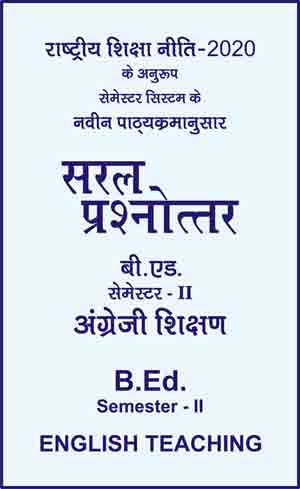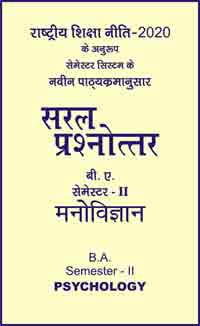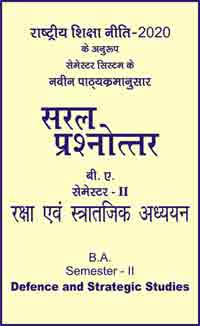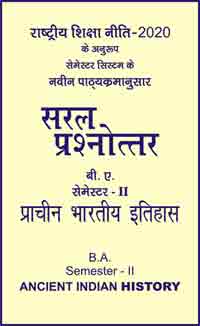|
बी एड - एम एड >> बीएड सेमेस्टर-2 अंग्रेजी शिक्षण बीएड सेमेस्टर-2 अंग्रेजी शिक्षणसरल प्रश्नोत्तर समूह
|
5 पाठक हैं |
||||||
बीएड सेमेस्टर-2 अंग्रेजी शिक्षण - सरल प्रश्नोत्तर
Question- Describe the various steps of teaching a poetry.
Ans.
Steps of Teaching Poetry :- There is no particular method for teaching poetry. Each poem has to be treated individually. However, the following general steps for the teaching of poetry may be suggested.
(i) Preparation :- Preparation of teaching poetry entails the following sub-steps :–
(a) Teaching-learning Aids :- A suitable aid is to be selected which should be relevant as well as economical. There are many poems and rhymes are available in audio cassettes. They can be made use of.
(b) Previous Knowledge :- The teacher should know the previous experiences, knowledge of the students. He should also be aware of the standard of the students alongwith their level of understanding and linguistic abilities in general. These help him in linking the new knowledge to the previous one.
(c) Introduction :- The teacher should give an appropriate introduction to arouse the interest of the students and to create the proper atmosphere for the poem which he is going to teach. The introduction differs for every poem and depends on subject-matter. If the poem describes the life of a person, for example, it requires a biographical sketch of that person. In case, the poem is historical, introductory talk should be about its historical background. Where the subject matter is of general nature, a teacher should read either a prose passage or a poem in English on the same topic. The teacher should take the precaution not to spoil the right atmosphere for the poem by unnecessarily talking about its author or giving its gist or summary.
(d) Statement of Aim :- The students should be told the aim of teaching the poem so that they can pay attention to it.
(ii) Presentation :- Poems should preferably be taught as one whole. Long poems can be taught in units, preferably, breaking them at the points where explicit turn of events has taken place. The presentation stage consists of the following points :–
(a) Recitation by the Teacher :- Recitation should be done by the teacher with understanding and feeling. He should do model recitation with correct pronunciation, intonation pause, stress, rhythm etc. Model reading is helpful in creating a love for poetry in the students.
(b) Loud Reading :- The teacher ask the students to recite the poem loudly by two or three students. The teacher will help them in reciting it.
(c) Explanation of key words :- After the second step the teacher is required to explain the key words or key images one by one. He may write these words on black-board too.
(d) Second Recitation by the Teacher :- Once again the teacher will recite the poem in the class-room and the students will follow him silently.
(e) Choral Recitation :- The students will recite the poem in chorus. Later on, they will recite the poem independently.
(f) Explanation :- In the next step, the teacher will explain the poem first in English and then in Hindi.
(iii) Comprehension Questions :- After the explanation, the teacher will ask certain questions based on the poem. The questions should be simple and should not break the continuity of the poem. These questions are asked to make certain ideas more clear to them.
(iv) Final Model Reading :- Once again the teacher will recite the whole poem and the students will follow them. The students are likely to enjoy this as they have grasped all aspects of the poem.
(v) Home Assignment :- Home assignment is the last step. In the poetry teaching, it should not be given too much importance. The teacher may ask the students to memorize the poem or to write the central idea of the poem. He may ask them to explain the few lines of the poem in their own words.
|
|||||













